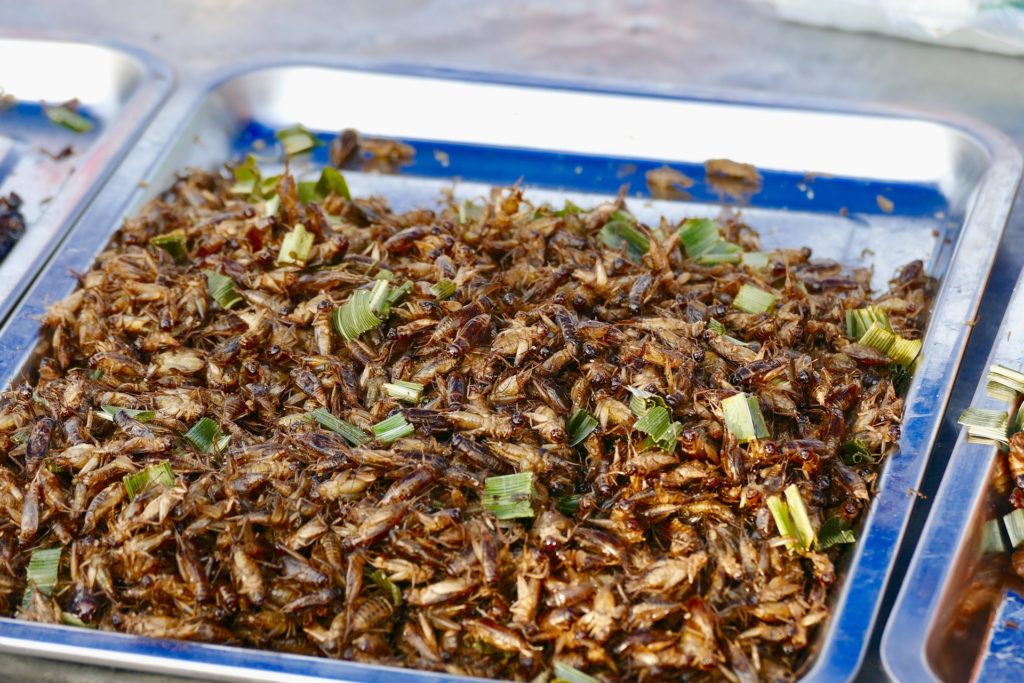Should we eat insects?
by How It Works Team · 09/11/2020
As the world’s population continues to grow so too does the need for more food, but are insects really the answer?
We live in an exciting world, one full of promise, innovations and opportunities. But we also live in a world that has significant challenges, such as a rapidly growing population. If global population growth continues to increase at its present rate, then by 2050 there will be close to 10 billion people in the world.
Feeding a burgeoning and ever-more demanding population is going to require a dramatic increase in food production, with estimates suggesting we will need to increase food production by 70 per cent. Which presents us with the question of how? Can we not simply increase the scale of what we are already doing? No is the simple answer.
Resources such as land, oceans, water and energy are already limited, and the sheer quantity of land and water required by the global livestock industry is placing an enormous strain on the environment, not to mention the impact it’s having in terms of pollution. The industry emits more greenhouse gases than planes, trains and automobiles combined.
Then there is the degradation of natural resources as a result of crop production and land required to raise livestock, with the Amazon Rainforest being a prime example. Pasture now accounts for 70 per cent of its previously forested land, with feed crops covering a large part of the remainder. And last but by no means least is the animals’ welfare. A quick internet search of ‘feedlots’ is enough to highlight the less than satisfactory conditions many animals are reared in for mass meat production.
So what’s the solution? How can we meet these ever-increasing demands for protein? How can we feed nearly 10 billion people? One possible answer to that question is entomophagy — the eating of insects. The very thought of such an act is enough to fill some people with a sense of repulsion, and yet our often common prejudgement towards entomophagy is not justified from a nutritional or environmental perspective. Insects are healthy, nutritious alternatives to mainstream staples such as chicken, pork, and beef. They are rich in protein, high in good fats and boast an array of micronutrients essential to the human body.
While an alien concept to many in the Western world, there are around 2 billion people worldwide for whom insects are a regular part of their diet. In most Western countries, however, people view entomophagy with a sense of disgust and associate eating insects with primitive behaviour. Such negative feelings do little to dispel the common misconception that people who eat insects in the developing world do so because of starvation. Many of those who eat insects do so not because there is little else available to them, but instead due to the taste and the fact they have long been part of local food cultures; some are even seen as delicacies.
Delicacies or not, edible insects fit the mould from an environmental point of view. Research has shown that crickets are twice as efficient in converting feed to protein as chicken, at least four times more efficient than pigs and 12 times more efficient than cattle, and what’s more, they require significantly less quantities of feed, and much less water, than livestock. However, a word of caution. On the face of it, given their nutritional content and the reduced resources required to rear them in comparison to meat, insects seem a viable solution to the need to produce more sustainable sources of protein. Yet it’s hard to say what effect the mass production of insects would have on the environment, or if indeed it would be sustainable in the long term.
Many of the 2 billion people who already include insects in their diet do so having caught them in the wild, as opposed to buying them from the large-scale insect farms that would be required to produce the quantities needed for larger populations. That’s not to say it’s not viable, only that at this stage the full extent of such production is not yet known.
And yet, while insects are commonly consumed as a food source in many regions of the world, Western societies are still largely averse to the practice of eating them because of the very fact they are insects. We have always seen insects as little more than pests, bugs, creepy crawlies, even objects of disgust — never as a food source. As American naturalist Joseph Charles Bequaert said, “What we eat is, after all, more a matter of custom and fashion than anything else. It can be attributed only to prejudice that civilised men of today show such a decided aversion to including any six-legged creatures in their diet.”
Our prejudices are hardly helped by minor celebrities being forced to eat insects on trivial reality television shows, a practice that only serves to reinforce and exaggerate people’s disgust towards bugs. We need to be actively educating people about the benefits of edible insects in a bid to try and change their perceptions and food preferences, which isn’t always easy but by no means impossible. Lobsters and shrimp were once considered to be a mark of poverty, but are now considered luxury food items, and what’s more, they belong to the same arthropod family as insects. So it begs the question, if we can change our thinking towards lobster, then why not insects?
While education surrounding the nutritional and environmental benefits of insects needs to play a part, there also needs to be a focus on creating attractive dishes that people actually want to eat. If we are to break down mental barriers and change people’s mindsets then we need to do so with dishes that not only taste great — insects boast a wide variety of flavours — but appeal visually as well.
For someone not sure about eating grasshoppers, the last thing they want is to see one staring up at them from their plate. As with any change, it takes time, and at present the edible insect industry is still in its infancy, although it’s growing rapidly as more people become aware of the benefits to the environment and also themselves.
As the world’s population continues to swell so does the need to dramatically shrink agriculture’s environmental footprint, meaning that we will need to look for more ethical and sustainable food sources very soon. Entomophagy isn’t the only viable option available, but it is one solution, meaning insects have a valuable role to play in the future of our world and the people that live in it. And, with every year that passes, that role is only going to get bigger. Grasshopper stir-fry anybody?
Try a tasty insect recipe

For those still on the fence about eating bugs, try disguising them in these chocolate and cherry cricket brownies…
Ingredients
– 125g of cashew nuts
– 250g of Medjool dates
– 75g of sour Morello cherries
– 50g of cricket flour
– 30g of raw cacoa powder
– 1 tablespoon of maple syrup
Instructions
- Place the cashew nuts in a food processor and pulse them for 15 seconds until they are chopped into small pieces.
- Now add in the dates, cherries and cacao powder and blitz for 20 seconds. Then add in the cricket flour and maple syrup and blitz until all of the ingredients form into a ball. This may take a few minutes but you will notice a sudden change in the texture and consistency of the ingredients.
- Roll the ball out on greaseproof paper until you have a neat rectangle and then place it in the freezer for 20 minutes to set. Once the mixture has set, remove it and cut it into squares, then keep it in the fridge in a sealed container.
This article was originally published in How It Works issue 107 written by Marcus Leach
For more science and technology articles, pick up the latest copy of How It Works from all good retailers or from our website now. If you have a tablet or smartphone, you can also download the digital version onto your iOS or Android device. To make sure you never miss an issue of How It Works magazine, subscribe today!






